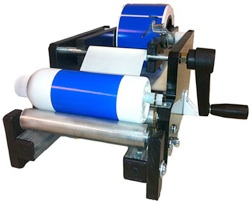
There are many factors that play into buying labeling equipment, and if you read our labeling equipment types guide, you should probably have an idea of the kind of machinery you want. Labeling equipment is an investment that should not be taken lightly as it will be used almost daily for many years. Complete labeling systems can cost as much as a new car – and you would never buy a new car without preparation, right? Same should go for purchasing labeling equipment. Let’s get started!
How To Select Labeling Equipment For Your Needs
1. Set Your Budget
Label application machines can range from several hundred to thousands of dollars depending on the machine’s sophistication. The cost for manual application machines can start around a couple hundred dollars because they are the simplest to use. Production expansion, however, can quickly outgrow the machinery. Low-speed table top appliers (semi-automatic) can cost several thousand dollars; special configurations can increase the price to $10,000 or more.
Full automatic in-line systems typically start in the $20,000 price range but some can cost upwards of $100,000 if it’s really complex and big. Used equipment may be cheaper, but it can have wear and tear on it that may affect its labeling accuracy.
2. Know Your Containers
Most labeling equipment is designed to accommodate different size containers, whereas different container types and products will require specific types of labeling equipment. For example, some semi-automatic machine can only apply labels to oval and round products, or certain container materials. There’s even labeling machines specifically made for specialty containers like cosmetic tubes, wine bottles, box cartons, etc.
3. Understand Your Labeling Needs
It’s easier to pick labeling equipment that can successfully perform desired tasks when you take the time to develop a labeling strategy. Before shopping, you should carefully consider all aspects of your production and labeling capabilities like the number of labeled units per day, labeling speed, labor costs, setup time & costs, label type, container shape/material, space for equipment, possibility of production growth – just to name a few.
4. Compare Machine Features
There are about six things you should look out for when comparing and choosing machines: specifications, roll capability, product dimensions, label dimensions, standard features and options. Other things to consider are shipping rates and equipment maintenance. It’s easier to make a purchase decision when you have an understanding of your production and labeling needs so it will be easier to decide which machine type, functions, and speed you want.
5. Configurations Offer More Labeling Options
Modern labeling equipment usually comes with a multitude of programmable configurations to accommodate different types of label applications. Semi-automatic machines have fewer configurations than in-line automatic because it’s not big enough for extra configurations; rotary systems usually have the most configurations to withstand vigorous labeling on a large or corporate level.
If you have any questions about labeling equipment that hasn’t been answered in our two part guide, please contact us to to discuss the specifics of your labels’ application, and any other labeling concerns.


